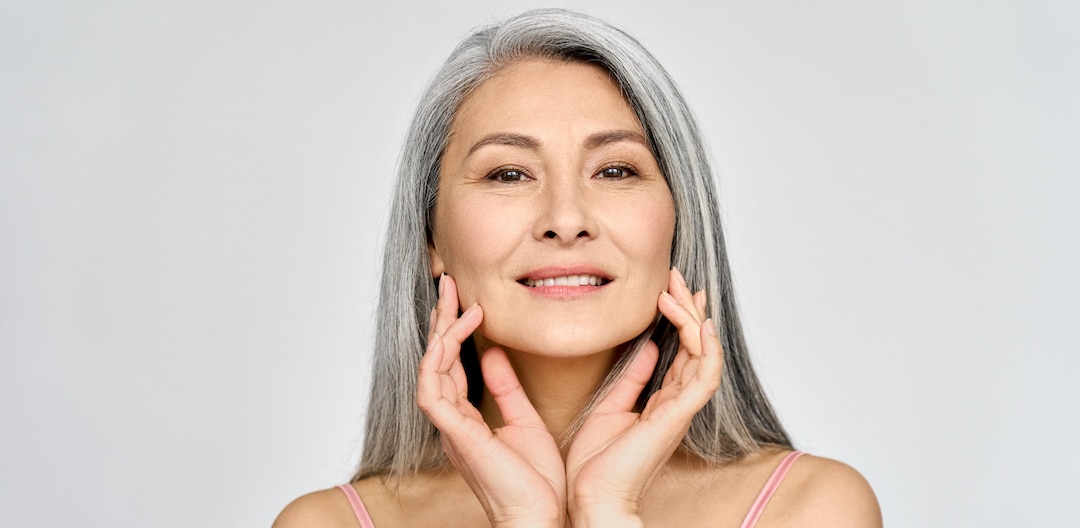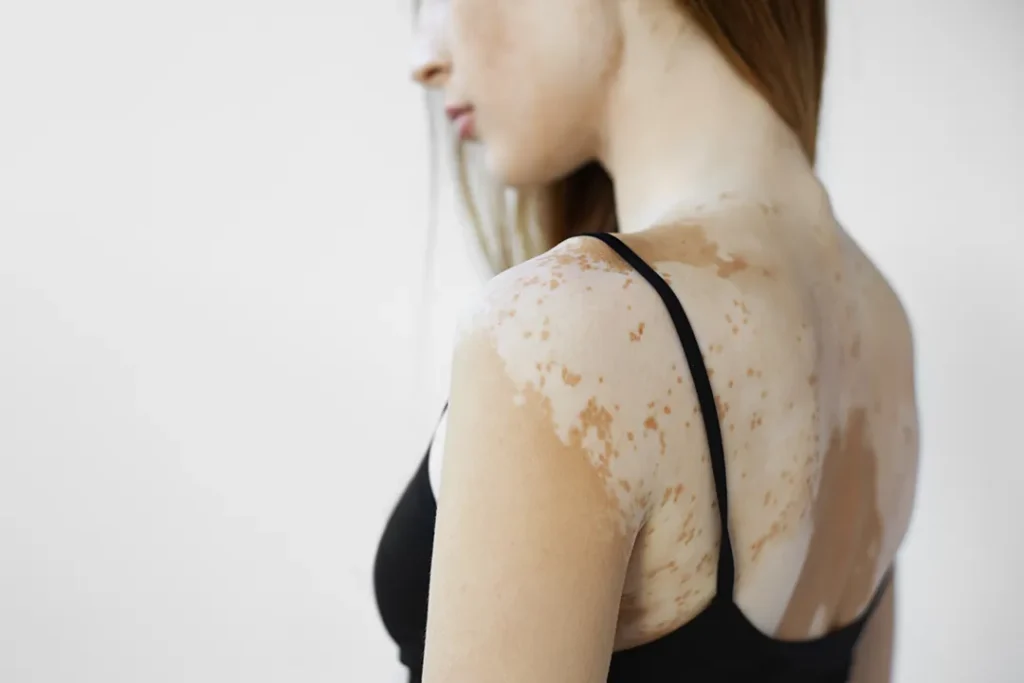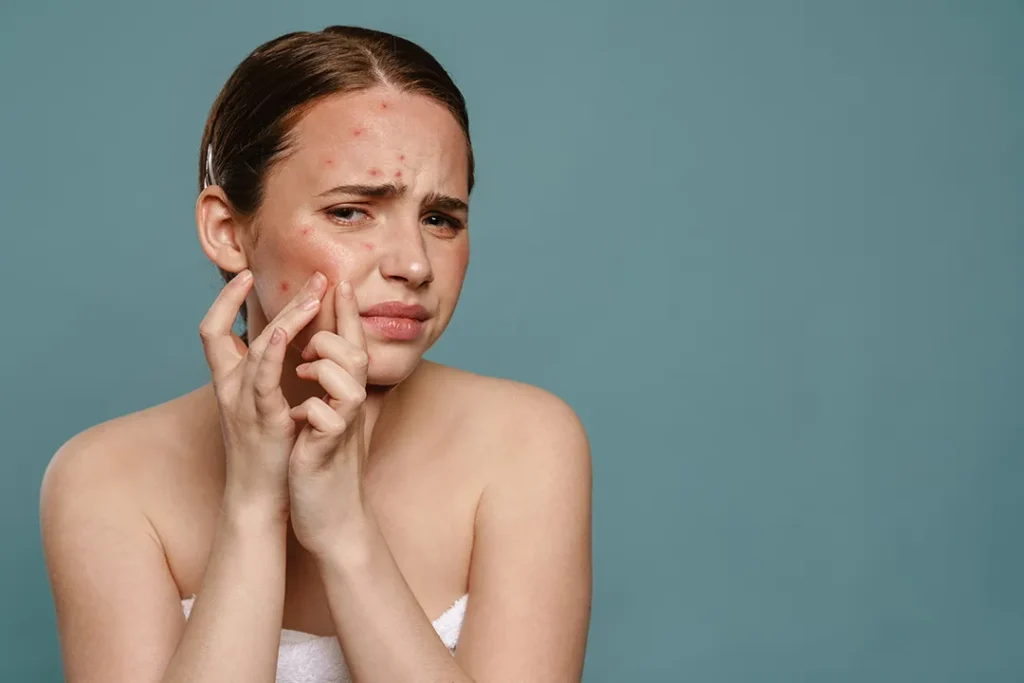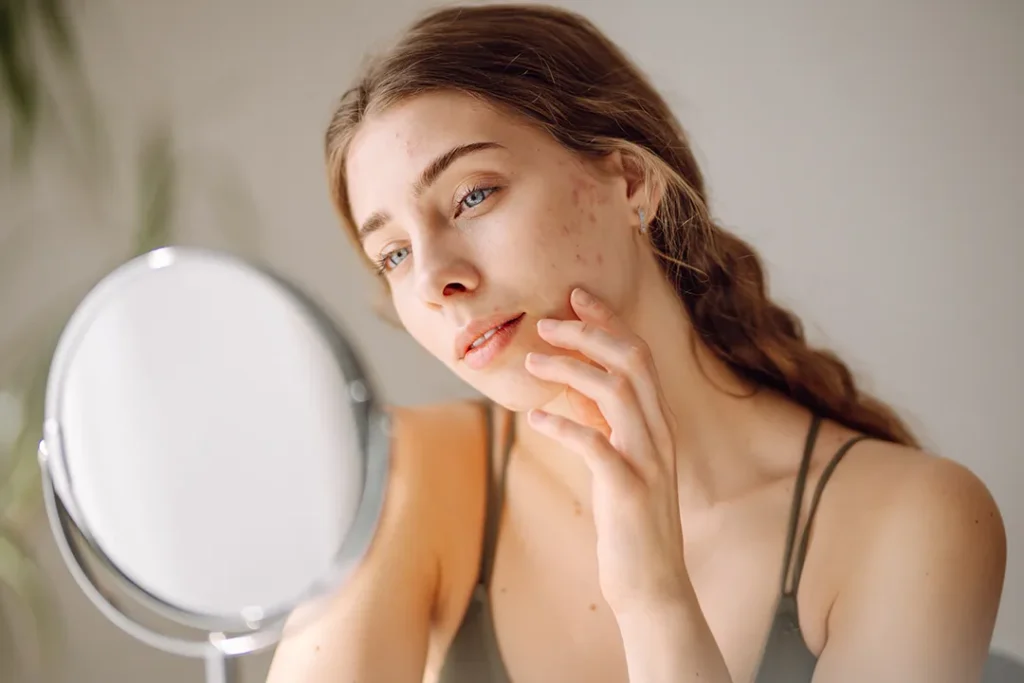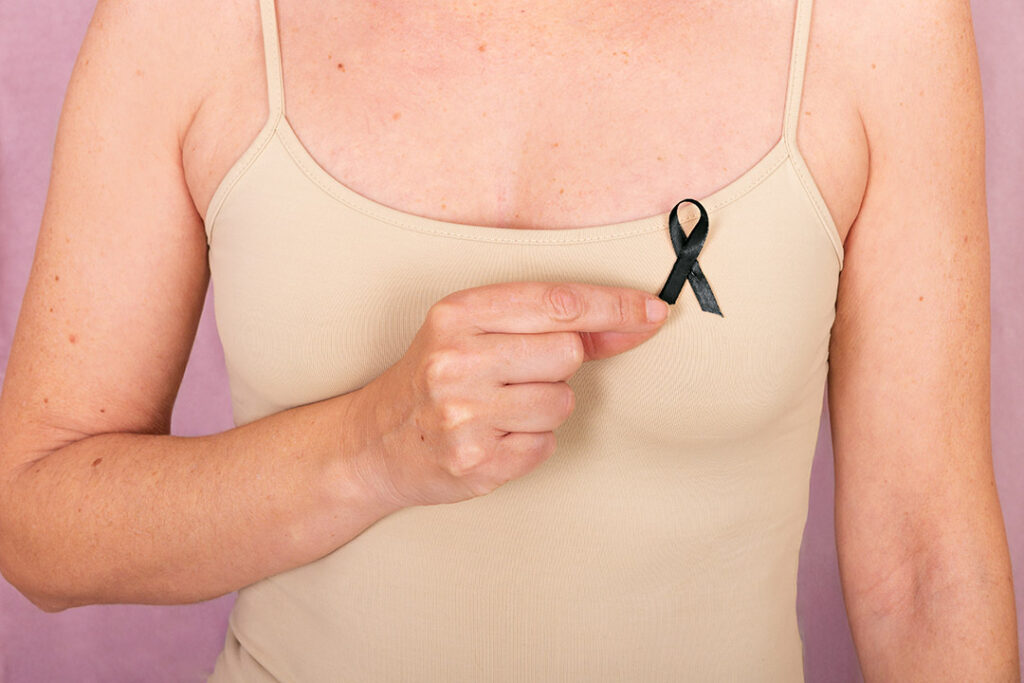Physical vs. Chemical Exfoliants
The goal of cleansing your face is to “remove dirt, sweat and make-up off the skin’s surface,” say experts. The goal of exfoliation is to “soften skin and allow a fresh layer of skin cells to emerge.” You have two choices to accomplish your goals:
- Physical Exfoliants – A physical or manual exfoliant is the kind of scrub based exfoliator you may have grown up using (hello, St Ives Apricot Scrub!), harnessing small abrasive particles to gently remove dead skin cells and product build up.
“Take care when using physical exfoliants” warns Dr Austin. “Look for products with natural particles, small enough to avoid micro-tears in the skin.”
Although many companies have fazed out microplastic beads, some scrubs still contain them so it is worth check the labels before purchasing. Microplastics can cause skin irritation if they happen to get lodged in your pores and contribute of ocean pollution when they are washed down the drain. These particles are small enough for fish and other sea creatures to ingest without causing themselves harm however as the food chain goes, we then come along and eat the fish with the yummy microplastic filling. Not so healthy for us or them! Scrubs like the Allmedic 3 in 1 Active Exfoliating Scrub contains castor oil beads which break down naturally.
- Chemical Exfoliants – As the name suggests, these products rid your skin of dead skin cells through chemical means. Chemical exfoliants are a gentler way to slough off dead skin without irritation, using something known as actives to get the job done.
What are Actives in Exfoliating Products?
When advertisers talk about actives in their product, they’re using a shorthand for active ingredients. The term refers to “a chemical or molecule in that product that is doing what the product says it’s supposed to do,” reports Self. Actives have undergone thorough testing in a lab and have clinical data supporting their skin care claims.
Is there such a thing as inactive ingredients? Yes, and they are valuable, too. Inactive ingredients do not target a specific condition but are useful in the creation of exfoliants. Water is the most common inactive ingredient. “Inactives are not always benign,” notes Dr Austin. “It’s good to work with a skin expert who understands which inactive ingredients in exfoliants may cause irritation or allergic reactions.” The most common irritating inactive ingredients are synthetic fragrances and colours added to make a product smell and look appealing.
Actives From Alpha to Beta: Hydroxy Acid Family
Austin Clinic’s products and treatments make use of two of the most powerful and popular actives in chemical exfoliation for beautiful skin. Each has its own unique merits.
- Alpha Hydroxy Acid – AHAs are a group of seven plant-derived acids. They are water soluble. You will find them in exfoliants, as well as serums, toners, and creams. They are true multi-taskers. In addition to exfoliating skin, they can help:
- Brighten complexion
- Prevent acne flare-ups
- Correct discolouration from age spots
- Stimulate collagen production
- Improve the appearance of wrinkles and fine lines
- Improve absorption of other products into the skin
- Beta Hydroxy Acid – BHAs are oil-soluble. Unlike AHAs, they can go deep into pores to remove excess oil (sebum) and dead skin cells. The skin experts at Austin Clinic turn to them to help patients address:
- Acne
- Sun damage
- Sensitive skin issues
- Rosacea-related redness
When Skin Care Ingredients Baffle You, Call Us
Don’t beat yourself up if you’re having trouble understanding all the finer points in the science of skin care. If you do find yourself at Priceline, browsing the aisle with exfoliation products, here are three things you should check on the label:
- The active ingredients (Do they do what you want?)
- Ingredient concentration (Is there enough of the active ingredient to work?)
- Inactive ingredients (Are any of them irritating to you?)
Exfoliation is a beautiful thing. To learn more about it and the other services we offer at our skin clinic in Balgowlah, contact us today for a prompt (and enthusiastic) response.
